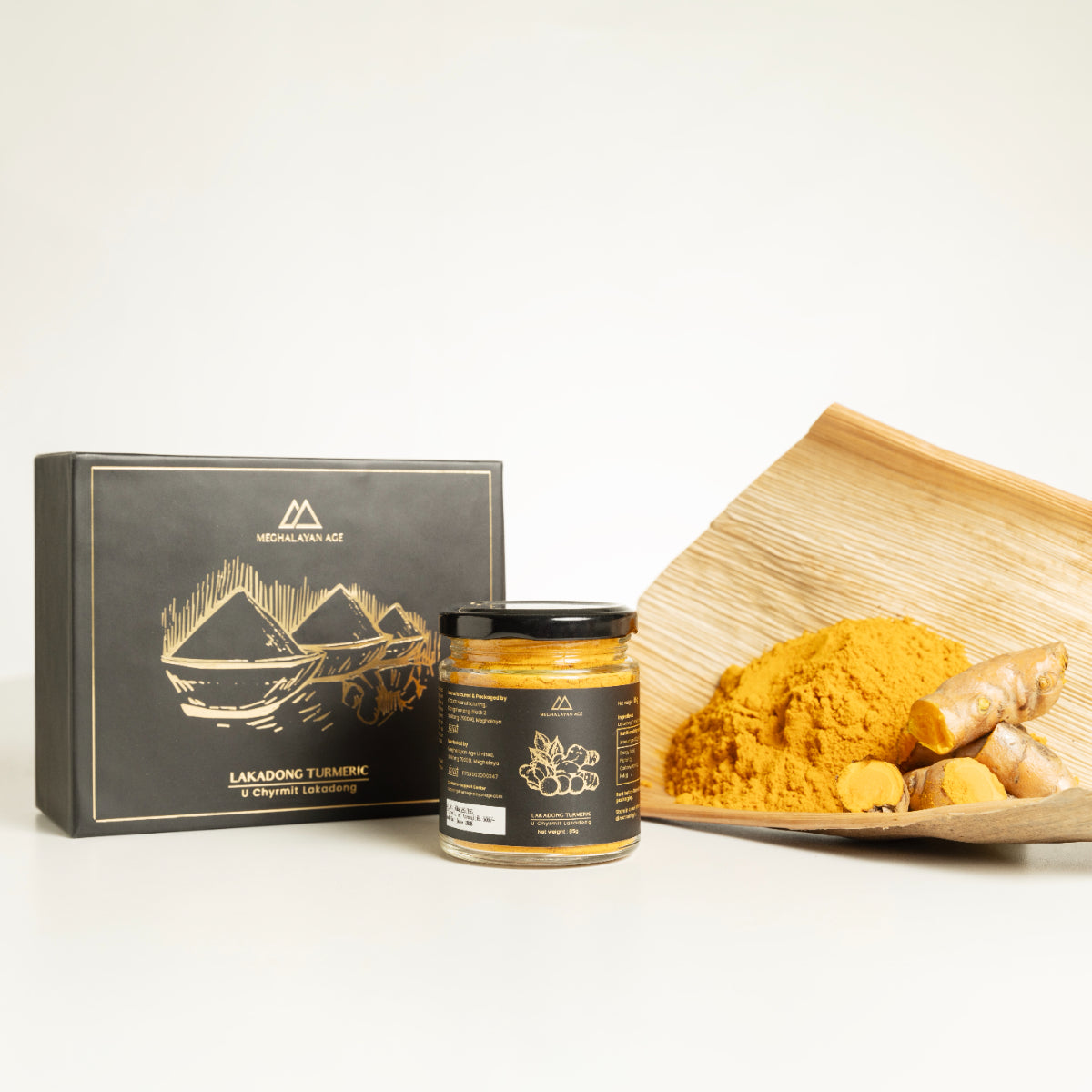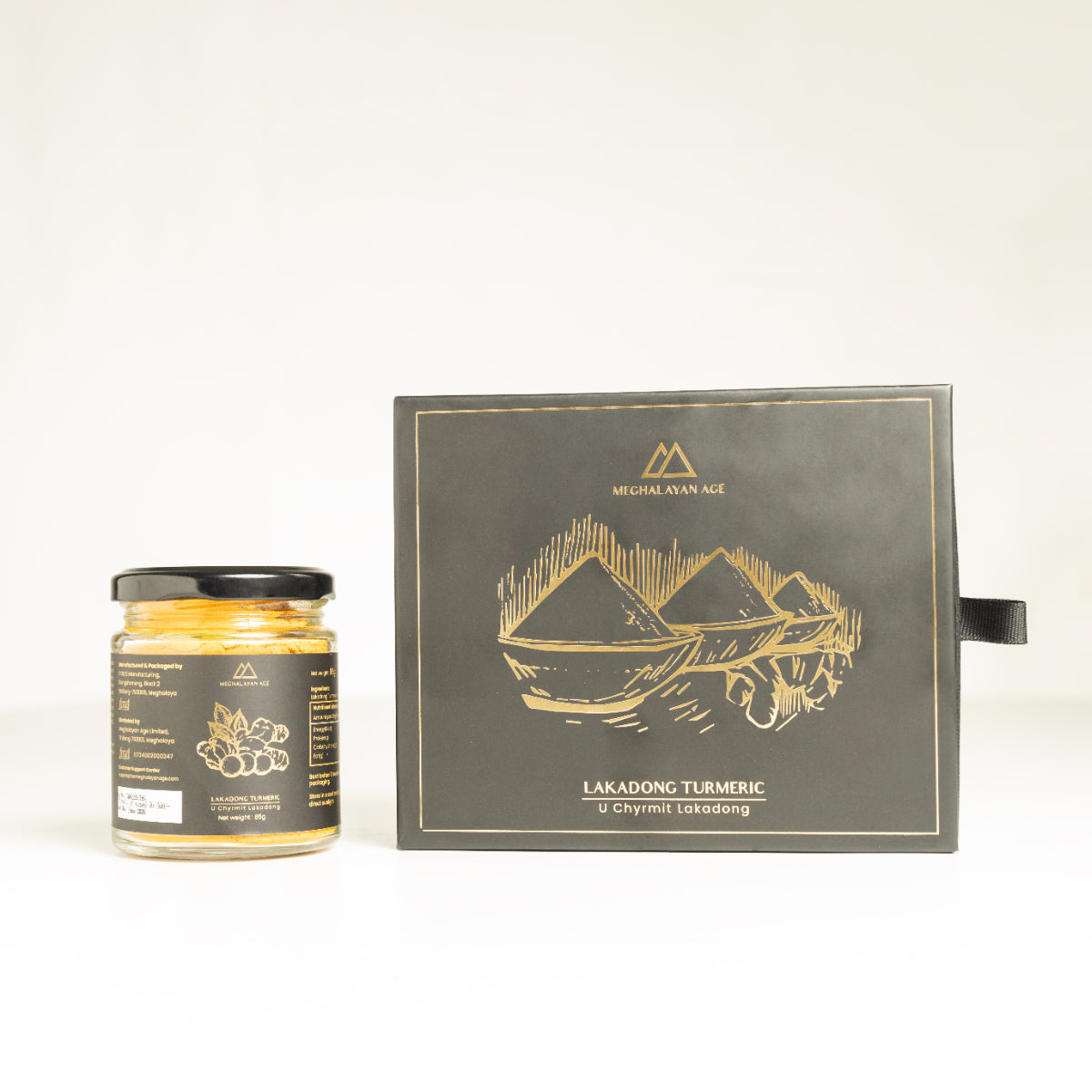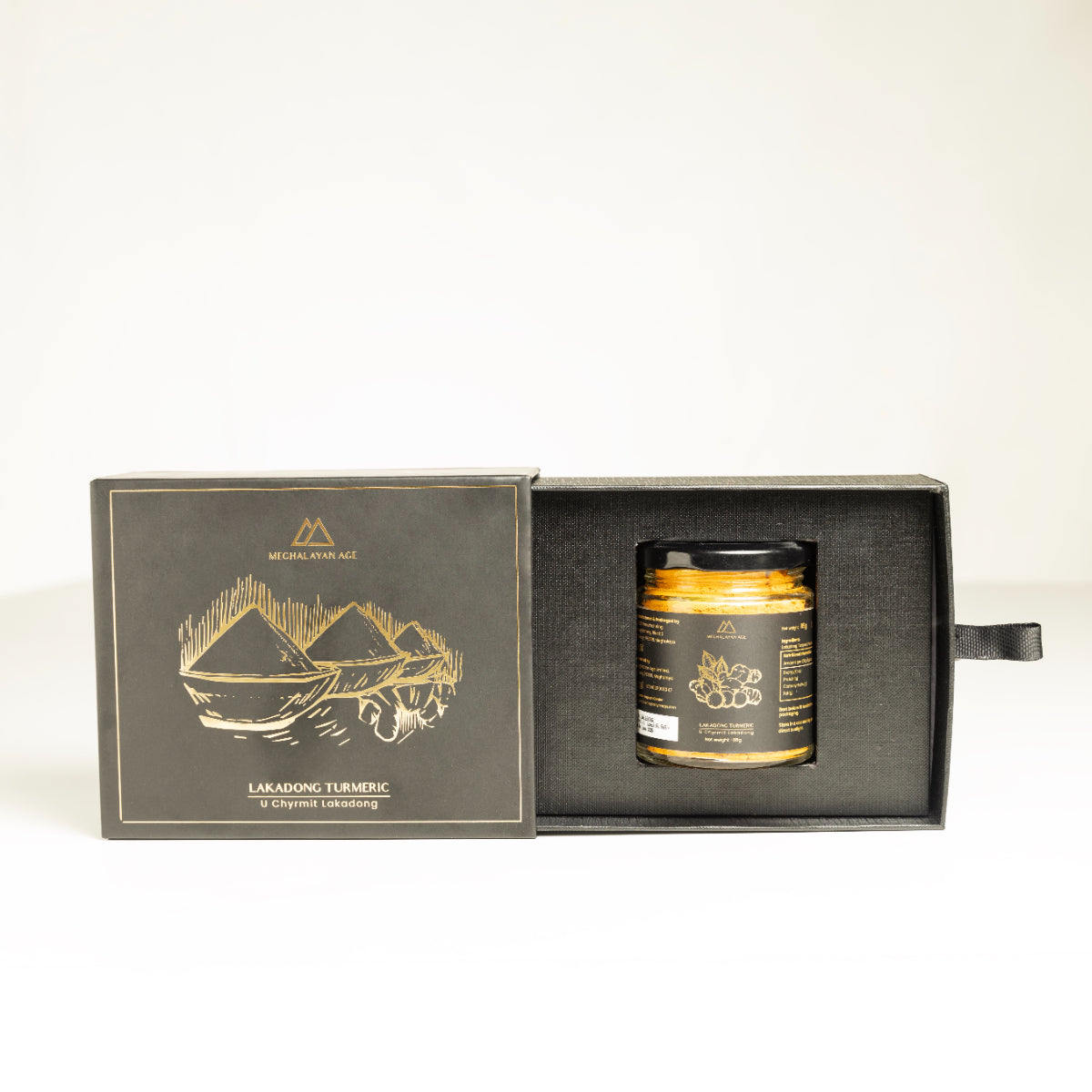
Easy Returns
Return within 15 days of order delivery. See Ts&Cs

Exchange Available
Conditions Apply. See Ts&Cs

Free Shipping
On orders above Rs 999

Secure payments
100% secure payment gateway
You can only add up to 10 products.
Couldn't load pickup availability
Product Details
Product Details
Local Name: U Chyrmit Lakadong
Grown by women farmers in over 100 villages of Jaintia Hills, Lakadong Turmeric (haldi) is a special cultivar known for its high curcumin content—8.9%, compared to 2–3% in regular turmeric. Native to the village of Lakadong, its quality is a result of selective breeding, rich soil, ideal climate, and meticulous care, making it one of the most pure, potent, sought-after and organic turmeric varieties in the world.
Care Instructions
Care Instructions
- • Store in a cool, dark place.
- • Keep tightly sealed.
- • Use a dry spoon.
Manufacturing Process
Manufacturing Process
In The Beginning, a warm sunrise hits Lakadong, a small village tucked away in Jaintia Hills in early Winter, the farmers begin their day to plant the Lakadong Turmeric - the miracle spice that grows specifically in this region of Meghalaya. Moulded by the meeting of the two rivers Myntang and Mynriang, this fertile picturesque valley lies nestled within dense evergreen forests. Ladies dressed in their colourful ‘Jainkyrshah’ (Khasi aprons) leave their homes and head to their Lakadong Turmeric fields carrying ‘Khohs’ (Conical Bamboo Baskets) on their backs filled with their trusty ‘Wait’ (a hooked blade) and ‘Moh-khiew’ (a spade) to sow Lakadong Turmeric. They plough the fields and make rows of beds where 3 to 4 seed rhizomes are sowed into each row. Our Lakadong Turmeric farmers hold true to their roots and practise traditional methods of farming by using no chemical fertilizers or pesticides. The black alluvial soil is so fertile that they don't need fertilizer, making it pure and organic. They water the beds row after row and wait, while nature takes its course. As the rains set in, it's only a matter of a month when the seeds start to sprout. As it requires sufficient rainfall, through the monsoon months they watch as their Lakadong grows its stems into green, long, and tall sharp leaves. As December draws near, the leaves of the Lakadong turmeric wither and tell you that it's time to harvest. The ladies head back to the fields with their baskets and 'Moh-khiew' ready to harvest the turmeric roots. These farmers gather around together and sing songs as they cautiously dig into the ground to take out the rhizomes. The songs sung at the time symbolize prayers for a good and bountiful harvest. Each rhizome cluster carries about 8-10 fingers. The mother (Bei) rhizome is of high importance to farmers, as it is the best rhizome seed material for the next plantation season. It is usually stored well and not sold off like the finger rhizomes. After the harvest is complete, they fill their baskets to the brim and help each other lift their load as they walk back home. The rhizomes are gently tapped to remove off excess soil and washed before they are sun-dried over traditional bamboo weaved mats called ‘Shylliah’. With prevailing long hours of the warm winter sun, the Lakadong turmeric dries quickly after which they are sorted and graded. Here the roots are trimmed, and the seed material is separated from the ones to be processed and packed.



U Chyrmit Lakadong Sourced from: Lakadong, Jaintia Hills
A warm sunrise hits Lakadong, a small village tucked away in Jaintia Hills in early Winter, the farmers begin their day to plant the Lakadong Turmeric - the miracle spice that grows specifically in this region of Meghalaya. Moulded by themeeting of the two rivers Myntang and Mynriang, this fertile picturesque valley lies nestled within dense evergreen forests. Ladies dressed in their colourful ‘Jainkyrshah’ (Khasi aprons) leave their homes and head to their Lakadong Turmeric fields carrying ‘Khohs’ (Conical Bamboo Baskets) on their backs filled with their trusty ‘Wait’ (a hooked blade) and ‘Moh-khiew’ (a spade) to sow Lakadong Turmeric. They plough the fields and make rows of beds where 3 to 4 seed rhizomes are sowed into each row. Our Lakadong Turmeric farmers hold true to their roots and practise traditional methods of farming by using no chemical fertilizers or pesticides. The black alluvial soil is so fertile that they don't need fertilizer, making it pure and organic. They water the beds row after row and wait, while nature takes its course. As the rains set in, it's only a matter of a month when the seeds start to sprout. As it requires sufficient rainfall, through the monsoon months they watch as their Lakadong grows its stems into green, long, and tall sharp leaves.




